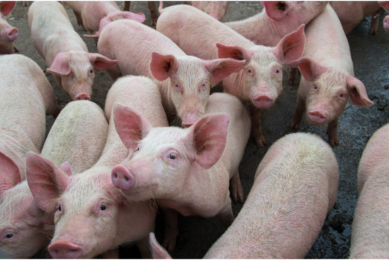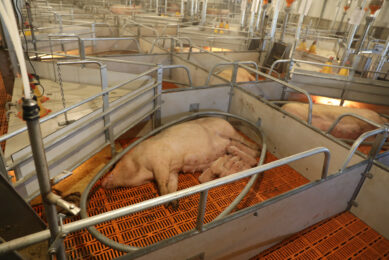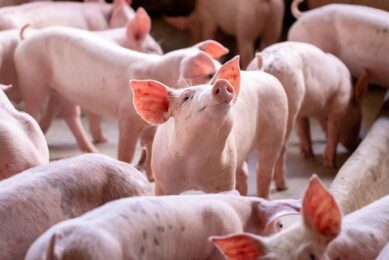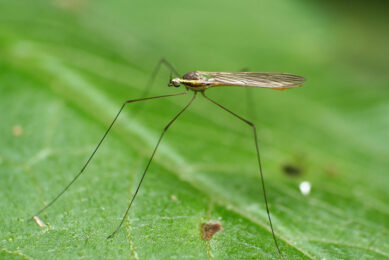Are we prepared for pig diseases in the future?
Over the last few decades we have had several new diseases descend on the pig world threatening its very existence. National/ Federal Governments in most countries have well laid-out plans to deal with foreign animal diseases (FADs) or the various ‘listed’ diseases that are a threat to the national livestock or animals within that particular country.
What we do not usually have is an action plan for ‘new’ or emerging, non-listed diseases.
Yet, these ‘new’ diseases are the ones that creep up or explode on us and catch us off guard, totally unprepared and often defenseless against the latest new threat. These are also diseases that often have a huge negative economic impact when they hit a herd. Examples of such diseases over the last two decades that have had a global impact include:
©
• PRRS (Porcine Reproductive and Respiratory Syndrome)
• PCVD/ PCVAD (Porcine Circovirus Disease/ Porcine Circovirus Associated Disease)
• SIV (Swine Influenza Virus)
New diseases
Outbreaks of other new disease that have had a more regional rather than worldwide impact include Nipah virus disease in Malaysia, Menangle virus in Australia and just a few months ago occurrences of Ebola Reston virus in swine herds in the Philippines. I have purposely excluded H1N1 influenza virus. This is a human disease spread among humans with little or no swine involvement except the occasional accidental infection of a few swine herd by humans.
It is not by accident that these are all viral diseases. In previous decades we have been visited by other serious disease threats. Actinobacillus pleuropneumoniae (APP) and Streptococcus suis immediately come to mind. The (somewhat) saving grace with those diseases is that they are bacterial diseases and we soon identified good old antibiotics to combat and control them until we got a handle on the characteristics of each bacterium and its epidemiology and developed more effective measures using management techniques to control and, depending on the disease, even eradicate them.
Not so compliant
We have found the viruses to be not so compliant. Yes, we do have PCV2 vaccines that have virtually beaten PCVD into submission. Those vaccines did come on board shortly after the epidemic struck in North America but they came after ten years of ongoing hardship due to PCVD in many EU countries and PCV2 vaccines are still not fully available in many parts of the world, including Eastern Europe, the Far East and some South American countries.
Surveillance for emerging animal diseases
What just about everyone recognises that we do need is an adequate surveillance system in place so that it senses and picks up on changes in disease patterns that provide early warning markers that a new disease might be emerging. But just how is that accomplished?
Surveillance systems range from passive observations based on voluntary submissions by veterinarians and producers to diagnostic laboratories through to very active systems that constantly mine mortalities and production records right at the farm level.
Monthly scanning
The UK’s Veterinary Laboratories Agency’s Monthly Scanning Surveillance of pig diseases report would be an example of a passive system that monitors changing patterns of endemic and potentially new and emerging pig diseases. The European Surveillance Network for Influenza in Pigs is an example of a more active surveillance system, but in this case for the changing pattern of one disease, swine influenza. Similar systems are in place, to lesser or greater degrees, depending on the country, in many countries.
A less intensive and very acceptable alternative is to have sentinel herds spread across a region or a country that are monitored serologically and by veterinary visits to do herd ‘walk-throughs’ and necropsies on a regular basis (e.g. monthly, quarterly, semi-annually).
This approach works, of course, depending on how many sentinel herds are established. Too few and you run the risk of being very late in identifying a changed disease status in the national or regional herd. Too many herds and you quickly overpower human and financial resources to maintian effective monitoring and the system falls apart.
Surveillance of emerging human diseases
There are sophisticated and ever more complex surveillance systems in place for monitoring the emergence of new diseases in humans. Within these complex systems, however, are much simpler portions that are easier to maintain and capable of gleaning valuable early indicators of changing or emerging diseases.
For instance, a full year before any official announcement was made by Chinese government officials, an article published privately reported on an unusual increase in visits to emergency departments in Guangdong Province of people with respiratory illness. This initial report was followed by several newspaper articles and other media reports that signalled what became the SARS (severe acute respiratory disease syndrome) outbreak of 2003.
Another example is the observation of increases in purchases of certain over-the-counter medications in a short period of time in a defined geographical area. For instance, these might be medications for generic ‘colds’ or ‘diarrhoea’ or ‘fever’, but if these unusual changes are being adequately monitored they do serve as early warning systems for an impending outbreak of disease.
Although we do not have such systems in place in the veterinary world or more specifically the pig world we do have rudimentary facsimiles at least on individual farms. A simple example would be automatic metred water delivery systems that are present on most large farms. It is not uncommon that prior to the outbreak of certain diseases there is a precipitous drop in water disappearance two to three or more days prior to observation of clinical signs of disease among the pigs. These are early warning signals of an impending disease outbreak that can eventually be linked and mined on a regional or larger basis.
HealthMap
And then there is HealthMap… a very sophisticated realtime disease monitoring system with worldwide capabilities of tracking new and emerging infectious diseases and possibly raising alerts about diseases in humans and animals, via the internet, locally, nationally and globally.
For the pig world, HealthMap will be very helpful after a new disease has already been identified and partially characterised. It will allow us to track the new disease and see where it is spreading but it is less likely to be the initial source of identifying that new disease.
Gaps in the system
That brings us to further impediments on our ability at early recognition of a new disease. Even if we did have adequate surveillance systems we still would have gaps between observation that a ‘new’ or changed pattern of disease has occurred and an adequate response to the potential emerging disease. Who is responsible for taking the lead? Is it the industry? The regional or federal authorities? The veterinary profession? Diagnostic labs? At what point do researchers and university academics get involved to unravel the identity of a brand new, never-before-seen agent?
There is even a gap between the observation that a change has occurred and acceptance or realisation by the wider population that a new disease of significance is about to emerge. These are gaping holes that have to be addressed in our preparedness in dealing with any new and emerging disease threats.
Next new swine disease
So, how prepared are we for the next new swine disease that will emerge? Overall, we are much more aware worldwide of the need to have surveillance systems in place that can identify and raise the alarm about new and emerging diseases, but we are far away from having adequate systems in place that can identify and respond adequately when the next new devastating pig disease does arrive, as it surely will, unfortunately probably sooner rather than later.











